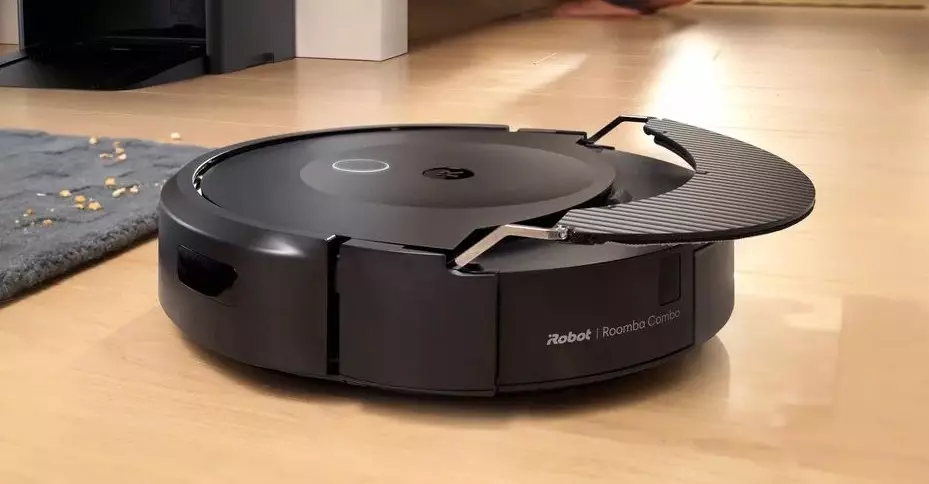Apple’s debut of iOS 18.4 marked a pivotal moment for the evolution of smart home technology, particularly for users of robotic vacuums. This update coincided with significant enhancements in the Matter protocol from industry leaders like Roborock, iRobot, and Ecovacs. The innovations brought forth are not merely incremental; they represent a paradigm shift in how consumers will interact with smart household devices, merging convenience with cutting-edge technology.
At its core, iOS 18.4 introduces home automation integrations that allow robot vacuums to be seamlessly controlled through the Apple Home app. This integration signifies the importance of the Matter protocol, designed with the intent to unify diverse smart home devices across various ecosystems, eliminating the barriers created by proprietary systems.
Firmware Updates: Bridging the Gap
The release doesn’t stop at iOS updates. Companies like Roborock have swiftly acted on this opening, announcing firmware updates for several of their premium models like the S8 MaxV Ultra and the Saros series. This ensures that these devices can fully utilize the capabilities of the Matter protocol, thereby extending their functionality and making them compatible with Apple Home.
Such firmware enhancements are critical; they not only improve connectivity across different platforms such as Google Home and Amazon Alexa, but they also set the stage for future developments in smart home technology. The rollouts from April 1st to April 10th for Roborock users are a prime example of how hardware can evolve in tandem with software updates, creating a responsive ecosystem that benefits the end-user consistently.
Pioneering Features of Matter Protocol
A fascinating aspect of the Matter protocol is its potential for creating a platform-agnostic environment for smart devices. This is particularly necessary as the market becomes increasingly saturated with gadgets from various manufacturers, each with its own app or control system. By enabling Apple users to manage their robotic vacuums through the Home app, Matter elevates the user experience while effectively reducing the complexity often associated with multiple smart home ecosystems.
However, it’s essential to recognize the limitations inherent in Matter’s initial rollout. Advanced capabilities such as detailed mapping and custom zone configurations remain exclusive to individual manufacturers’ apps. While Matter facilitates basic controls—like switching between vacuuming and mopping modes and room-specific cleanings—the absence of deeper features might frustrate users accustomed to advanced functionalities.
The Leading Players: Roborock, iRobot, and Ecovacs
Each of the key players in the robotic vacuum industry is responding uniquely to Apple’s foray into smart home integration. iRobot, for instance, has launched the Roomba Combo 10 Max along with an Auto Wash Dock, making it the first compliant with the Matter protocol. This move underscores iRobot’s commitment to ensuring that their products not only keep pace with technological advancements but also provide genuine utility to consumers.
Ecovacs, on the other hand, is taking a phased approach to integrating Matter support across their product lineup, ensuring that multiple models—like the Deebot series—are consistently updated. This denotes a strategic commitment to ensuring all consumer touchpoints are equipped to take advantage of the latest technological features.
The Consumer Perspective: What This Means for Users
From a consumer standpoint, these developments are empowering. Many individuals have become increasingly reliant on robotic vacuums for daily chores, and controlling these devices through a unified app makes life considerably easier. The ability to command nightly cleanings via Siri, for instance, not only reflects modern consumer desires for efficiency but also opens pathways for routine management of household tasks.
Moreover, this enhanced compatibility reduces the friction often experienced by consumers when managing various smart devices. With iOS 18.4, Apple users can expect a smooth experience, allowing them to blend their tech seamlessly into their daily lives without needing to juggle multiple platforms or interfaces.
While this is undoubtedly a leap forward, the expectation remains high for subsequent updates from all manufacturers involved. The future of smart homes lies in the ability for devices to communicate fluidly with one another, and as this trend develops, we can anticipate further enhancements geared toward making home automation not just functional but truly intuitive.

